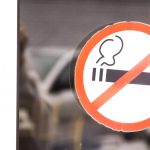Smokers: A Demonised, Dying Breed… Just As the Nanny State Likes It

As reported in a previous blog, Australian smokers will soon be paying up to forty $40 a pack for cigarettes. Last Wednesday, legislation was passed in the federal parliament that will see an annual increase on the tax on tobacco over the next four years. Currently, smokers are paying around $30 for a pack of 25.
The tobacco excise tax will rise 12.5 percent a year until 2020. The new increases mean that by the end of the decade, three quarters of the cost of a cigarette will be tax.
Tobacco price hikes were a Labor proposal
The legislation received bipartisan approval, which was no surprise. The system of price hikes was initially proposed by the Labor party prior to the last federal election.
In November last year, Labor announced the policy, explaining it would generate $50 billion in revenue over the medium term and get people to quit at almost double the rate.
At the time, Labor’s health spokesperson Catherine King claimed the increase would bring Australia’s excise rates into line with those of 33 other countries.
In May, the Turnbull government announced it would implement an identical policy as part of this year’s federal budget.
Smoking in Australia
The 2013 National Drug Strategy Household Survey found that around 12.8 percent of the Australian population over the age of 14, or 2.5 million people, smoke tobacco products. The rate of smoking amongst Indigenous Australians is much higher at 32 percent.
In 2004-5, about 15,000 deaths were attributed to smoking annually. However, smoking rates have been dramatically declining over the last decades, having halved since 1991.
A WHO recommendation
The policy of hiking tobacco taxes is recommended by the World Health Organisation (WHO). The organisation suggests the best way to control tobacco is to reduce demand, and the most effective way to do that is by raising the price.
WHO figures suggest that a 10 percent increase on a packet of cigarettes reduces demand by 4 percent in high-income countries and 5 percent in low and middle-income nations.
It’s just more of the same
But despite the shock over how hard smokers are going to be hit, last week’s legislation is actually a continuation of federal government policy that’s been going on for years now.
In August 2013, the Rudd government announced an identical series of hikes in tobacco excise over a four-year period. Beginning on December 1 that year, the tax on tobacco rose by 12.5 percent on an annual basis.
Then Australian treasurer Chris Bowen said the $5.3 billion hike in taxes was one of the biggest revenue raising measures in the party’s economic plan.
The coalition leader of the day, Tony Abbott, hit out at the new measures, stating the government should control its spending rather than raise taxes, especially one that would disproportionately affect low income earners.
The last tobacco tax hike occurred on September 1 this year, just thirteen days before the new legislation was passed.
Plain packaging was unsuccessful
This wasn’t the first tough-on-tobacco policy adopted by the Rudd government. Proposals for plain packaging on cigarettes were announced in 2010, and introduced in December 2012.
But the initial impact of the initiative was unsuccessful. Tobacco companies actually lowered their prices when they could no longer compete at a branding level.
Figures show that Australian rates of smoking actually rose by 6 percent in the first year of plain packaging, and it wasn’t until the 12.5 percent tax hikes began that numbers began to drop off again.
Ongoing smoking restrictions
Along with these steep price rises come further restrictions on smoking. A suite of new bans came into effect in Queensland this month. The state government has restricted smoking in a range of outdoor areas, including bus stops, taxi ranks, public pools and outdoor malls. The laws are designed to curb the effects of passive smoking on the general population.
Bans in NSW
Similar laws exist in NSW. Under the Smoke Free Environment Act 2000 and accompanying amendments, smoking is banned in all indoor public places, along with swimming pools, public transport stops and within four metres of the pedestrian access point to a building.
On July 6 last year, commercial outdoor dining areas became smoke-free and smoking within four metres of an access point to a licensed premises or restaurant was also banned. On the spot fines of $300 can be issued to those who don’t comply.
And since July 2009, it’s been illegal to smoke in a car with a child under the age of 16, and this law was extended to include electronic cigarettes on December 1 last year.
Enforcing smoking bans in Sydney’s CBD
In July this year, the City of Sydney announced it would be turning Pitt Street Mall into a smoke-free zone, along with Martin Place, which has undergone a 12-month smoking restriction trial. The council is pushing for police to arrest smokers who continue to defy bans.
Council Rangers can ask a person caught smoking for their name and address, as well as issuing a $110 fine. But rangers have no powers of arrest, so they may soon call on police to detain those who don’t cooperate.
Calls to legalise nicotine in e-cigarettes
The continuing increase on tobacco excise has prompted debate over Australia’s ban on nicotine in electronic cigarettes.
Liberal Senator James Paterson believes the healthier alternative should be available, especially as cigarette prices are about to soar. The senator has criticised the tobacco tax hike as regressive, as it disproportionately hits poor people.
The New Nicotine Alliance – a not-for-profit organisation advocating safer alternatives to smoking – has made an application to the Therapeutic Goods Administration (TGA) asking the medicines regulator to exempt nicotine from the Schedule 7 dangerous poisons list, at concentrations of 3.6 percent or less.
It argues that the health effects of nicotine are relatively minor compared to the carcinogens contained in cigarettes, and that if nicotine in e-cigarettes was legal throughout Australia, less people would partake in the more hazardous practice.
Forty leading Australian and international academics have made submissions in support of the application.
The TGA is expected to make its interim decision on this proposal in February next year.






